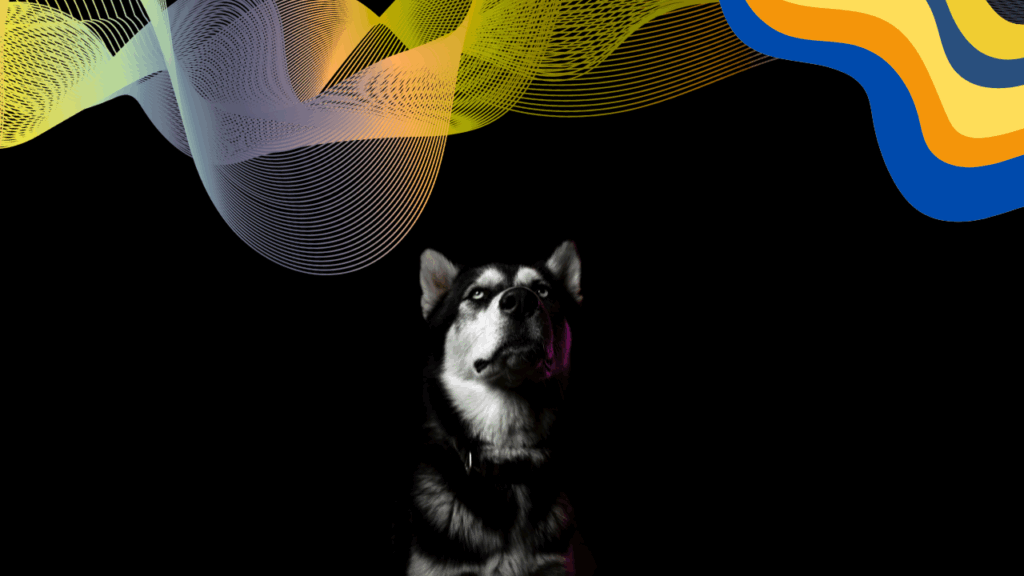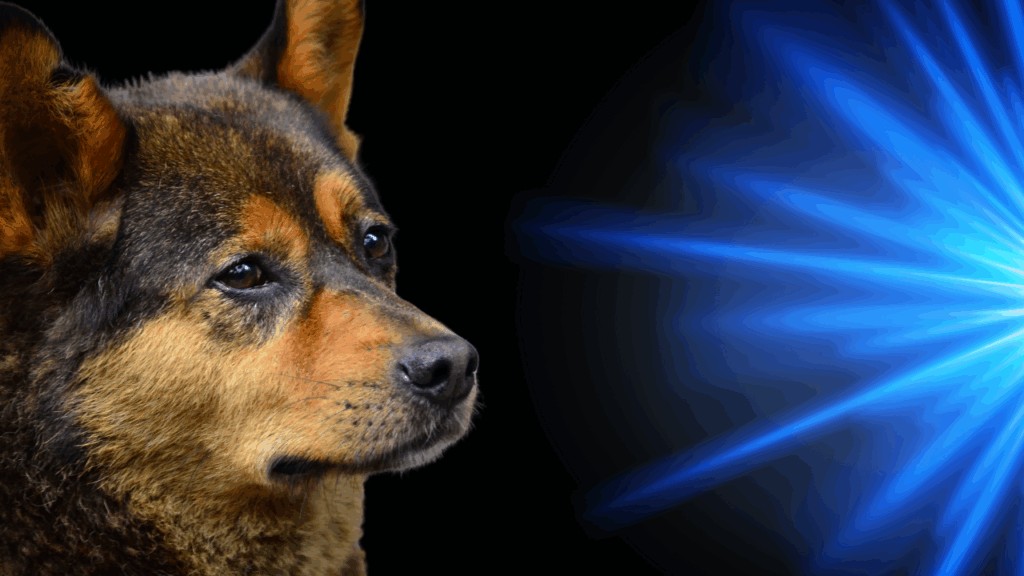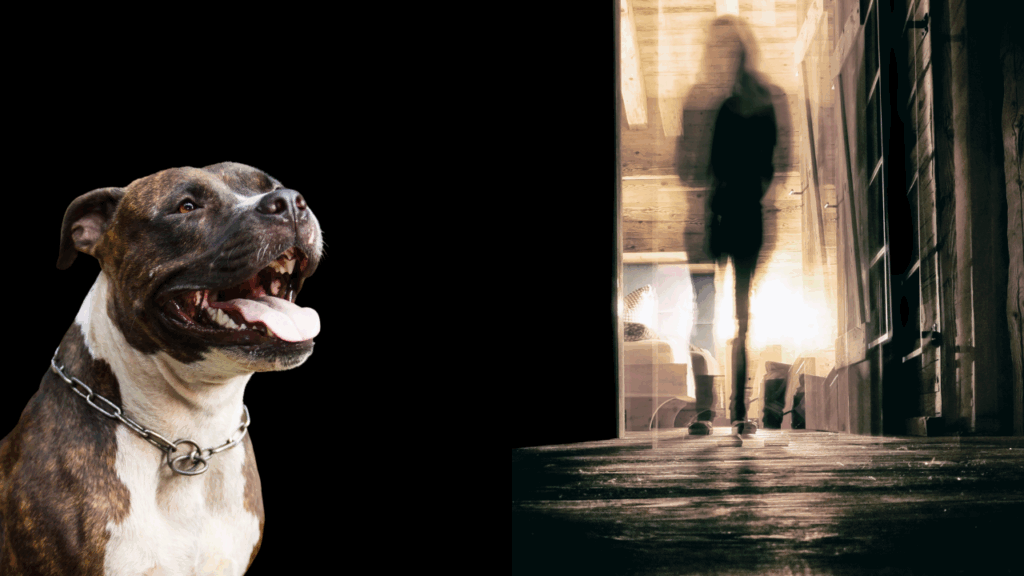Have you ever wondered why your dog sometimes stares at you intensely. Those deep gazing eyes aren’t judging you; they are peering deep into your soul, your energy and the aura around you. This has nothing to do with mysticism or the supernatural, because it’s pure biology and science. While dogs stare at us with a mix of love, curiosity, and sometimes uncanny focus, science says, it is more than that.
Science suggests that dogs might be perceiving things invisible to the human eye—literally. Through a blend of evolutionary biology, sensory research, and behavioral studies, scientists are unraveling what lies behind that intense canine gaze. And the truth is more fascinating—and slightly eerie—than we imagined.
The Mystery Behind the Canine Stare
Most dog owners are familiar with the feeling: you’re sitting quietly when you notice your dog staring at you with unblinking intensity. While we often chalk it up to love, hunger, or a need to go outside, there’s growing evidence that dogs may be reacting to things we can’t perceive. Their eyes might be processing colors, movements, and lights far beyond our range of vision.
Dogs Have Special Retina Cells for Night Vision and Hidden Movement

A dog’s eyes are dominated by rod cells helping them detect movement in low light vision aided by what is known as the tapetum lucidum, which amplifies light sensitivity reflecting photons back through the retina. This also enhances their dichromatic color vision meaning a dog’s vision is limited to the blue-yellow spectrum. However, this spectrum enables dogs and other animals to see colors humans don’t.
Scientific American Confirms: Animals Perceive Colors We Can’t

According to Scientific American, the animal kingdom is full of creatures that see a richer palette than we do. While humans rely on three color receptors (trichromatic vision), many animals—including dogs—rely on a different system. Although dogs are dichromatic (seeing primarily blue and yellow), their UV sensitivity compensates for what they lack in red-green perception. A groundbreaking study published in Proceedings of the Royal Society B revealed that dogs, among other mammals, can see ultraviolet (UV) light. This UV edge could allow dogs to detect things like damaged skin, blood trails, or organic residues that light up under UV light.
The Live Science Breakdown: What Colors Can Dogs Actually See?

Dogs perceive colors differently than humans. While we see a rainbow of reds, greens, and blues, dogs are limited to yellows, blues, and shades of gray. But Live Science clarifies that this doesn’t mean their world is dull—instead, it’s optimized for motion detection and contrasts. Their eyes are more sensitive to dim lighting and motion, which, combined with their UV detection, gives them a unique and powerful visual toolkit.
Why Your Dog May Be “Seeing” Something You Can’t

That piercing stare into an empty hallway or the corner of the ceiling might not be your dog reacting to nothing. They could be detecting light reflections, UV imprints left by living beings, or even tiny insects or changes in heat patterns. The phenomenon is not supernatural—though it might feel that way—but it is rooted in biology. They are simply tapping into a layer of perception that humans have long lost.
The Role of Evolution: A Predator’s Vision

Dogs evolved from wolves—predators that needed to hunt effectively in low light and across long distances. Their eyes adapted for survival. This includes:
A higher number of rod cells (for motion detection in the dark)
A reflective layer behind the retina called the tapetum lucidum (which causes eye shine and boosts night vision)
Broader peripheral vision
All this combined makes dogs acutely aware of changes in their environment—even the ones we can’t see.
Dogs Also “See” With Their Brains
Dogs are masters at reading human body language and facial expressions. Research from the University of Helsinki used fMRI scans to show that dogs’ brains respond to images of human faces. This could explain why they stare at us for long periods—they’re interpreting our emotions, thoughts, and moods in real time. This is especially true in the region of the canine temporal lobe called the Dog Face Area or DFA which increases activity when dogs see human faces. This specialized brain region helps dogs process human faces acting like the human fusiform face area.
The Emotional Stare: Beyond Science

Not all stares are about vision. Dogs also gaze to connect. Oxytocin, the “bonding hormone,” increases in both dogs and humans during sustained eye contact. A 2015 study published in science revealed that mutual gazing between dogs and owners increases oxytocin levels in both species—mimicking the parent-infant bond. So, when your dog stares into your eyes, it might just be love.
How Dogs Detect Illness and Emotions Through Vision
Another extraordinary aspect of their sensory perception is their ability to detect illnesses and emotions. From cancer to diabetes and even seizures, dogs can sense changes in our body through smell and subtle visual cues. A dog staring at you with fixed focus may be sensing biological changes you’re not aware of—yet. The specialized cells in a dog’s retina allow them to detect electromagnetic impulses emanating from you due to changes in your emotional state. Thus, if you are depressed, but pretending to be happy, humans will be fooled but your dog won’t. They will literally see the energy radiating from your sadness in colors only they can perceive
The Paranormal Question: Do Dogs See Spirits?

While there’s no scientific proof dogs see ghosts, their ability to detect unseen stimuli has fueled folklore and personal accounts for centuries. Because dogs can pick up on UV light, hear higher-frequency sounds, and smell at a level far beyond our capabilities, they may appear to “react to spirits.” But science offers grounded explanations: shifts in light, drafts, distant sounds, or chemical changes we can’t register.
The Verdict: Dogs Live in a Richer Sensory World

While it may feel unsettling to catch your dog staring at “nothing,” the truth is they’re experiencing a reality far more intricate than our own. They see light we can’t, detect movement in darkness, and read emotions in ways humans are still struggling to fully understand. So the next time your dog locks eyes with you—or with an empty space—remember they’re seeing what we don’t, and that’s not just poetic. It’s science.

Andrew Alpin from India is the Brand Manager of Doggo digest. Andrew is an experienced content specialist and social media manager with a passion for writing. His forte includes health and wellness, Travel, Animals, and Nature. A nature nomad, Andrew is obsessed with mountains and loves high-altitude trekking. He has been on several Himalayan treks in India including the Everest Base Camp in Nepal.






